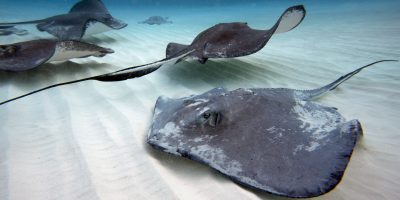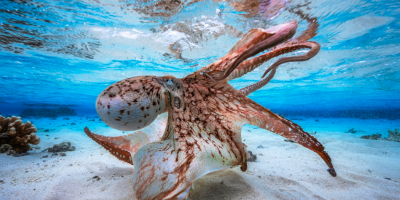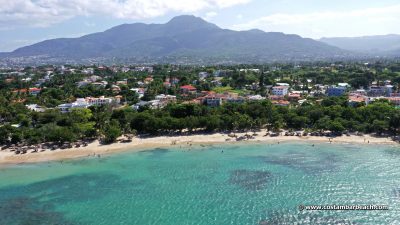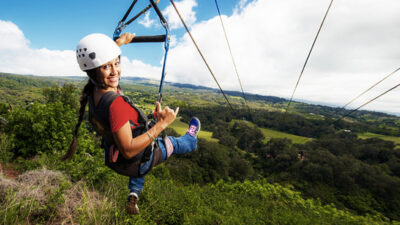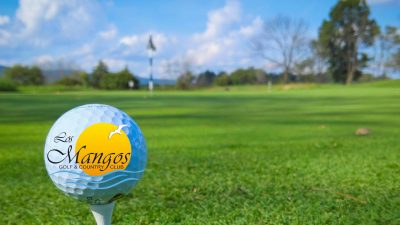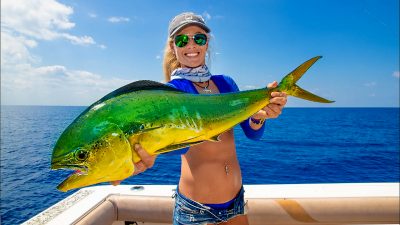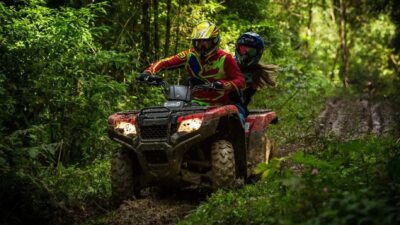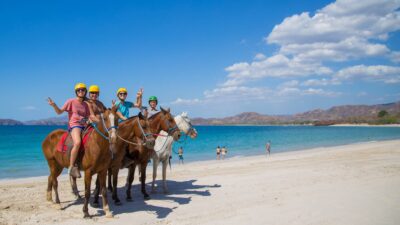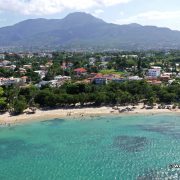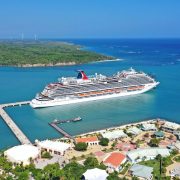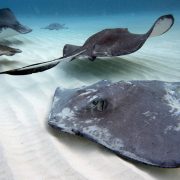Dominican Manatees are gentle mammals of the ocean, and have been around well before the Taino indigenous people inhabited Hispaniola. Its common name comes from the indigenous Caribbean language (manatee means “with breasts”), while the scientific (Trichechus) refers to the small hairs scattered on its body.
Morphology
The West Indian Manatee is a large mammal: it can weigh 300 kilograms. It has fin-shaped forelimbs with five deformed fingers, provided with small nails. The tail looks like a spatula and distinguishes it from other sirenians such as dugongs; the skin is very thick and bluish-gray in color.
Photo Gallery
Like the rest of the mammals, manatees rise to the surface to breathe air (if they are resting they space the rises more apart, every 20 minutes; on the other hand, when they are active they endure much less).
They exchange up to 90% of the air in their lungs, exhaling very hard when their nose breaks the surface of the water; breathing this way means there is more fresh oxygen and that allows you to stay submerged longer.
On Video
Another characteristic of their breathing is related to two adaptations: they can only breathe with their nose, which in turn has special folds that are sealed when the animal is submerged. The Taino hunted the West Indian Manatee for food and shelter.
Manatees do not have natural predators, only the killer whales that sometimes frequent its habitat in other latitudes of the planet. If you ever go diving around Costambar Beach you might find one or two, or if visiting the manatee sanctuary in La Ensenada. This is a protected species in the Dominican Republic.
West Indian Manatee Range
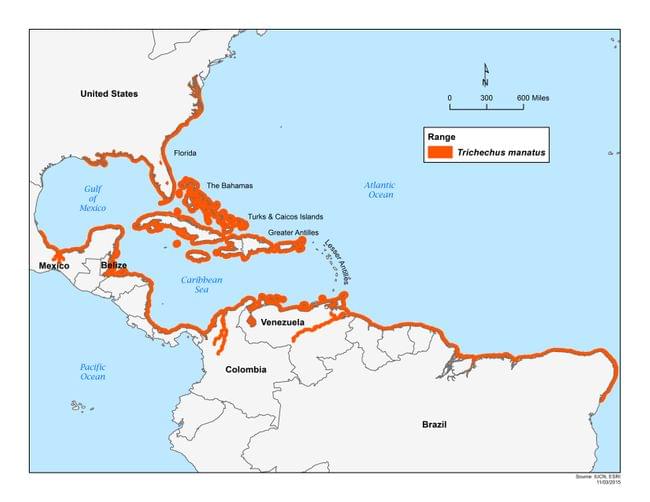
Seeing these friendly mammals swim over you is quite an experience. What does the West Indian Manatee eat? The West Indian Manatee’s diet is based on riparian plants, called Manatee grass or turtle grass, present in shallow waters close to the surface.
Feeding & Breeding
They Eat up to more than fifty different plants, including mangroves and algae. How does the water cow reproduce? The Manatees form large herds that reproduce from time to time (the period that passes between one birth and another can reach five years).
When it is born, the calf is totally dependent on the mother and remains with her for about two years. Breastfeeding ends when the baby has formed teeth. Dominican Manatees have been well protected for many decades, with strong support from the government.
More Sources:
- Manatees. – National Geographic
- Manatees Facts – Save the Manatee
- Genus Trichechus – Britannica
- Learn about Manatees


